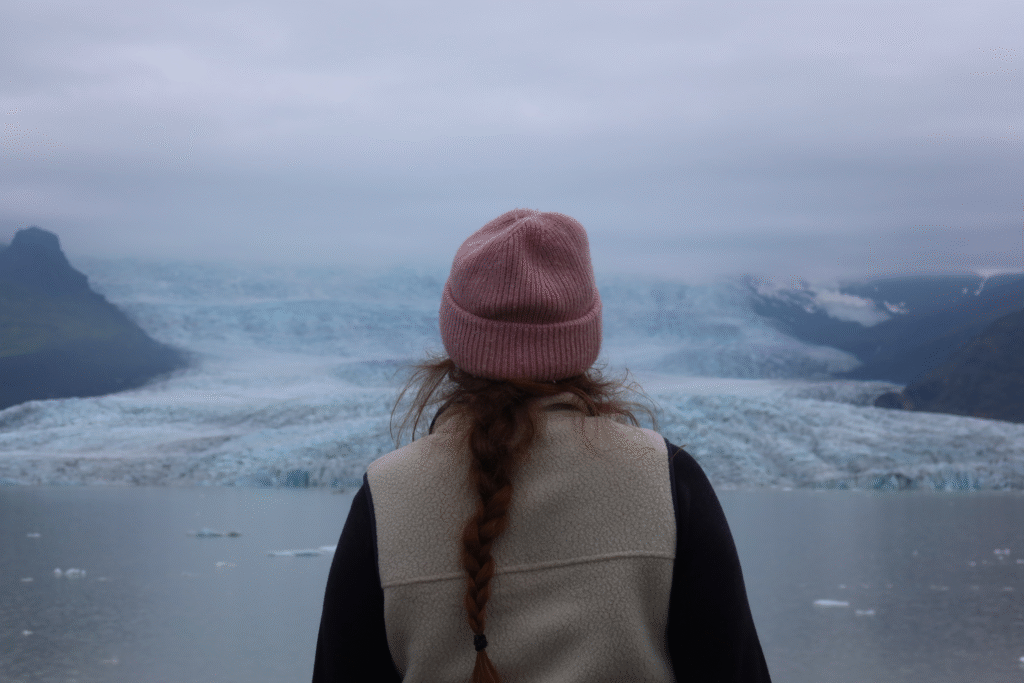
I’ve been eyeing a trip to Iceland in the summer for years now! Thanks to social media I was seeing the lupines every summer all over my instagram feed, along with the waterfalls, the midnight sun, PUFFINS, and everything in between. Since my work contract ended in June and I had 6 weeks between jobs. I hopped on google flights and saw some cheap flights that I had to book. So, let’s talk about the essential Iceland travel tips that helped with my trip.
I’m going to take about were we stayed and tips for Iceland. I’ll be making separate blog posts going over my whole itinerary and a post dedicated to seeing the puffins in Iceland.
Iceland does require planning especially for hotels, Airbnb’s, and rental cars. Summer time is Iceland is the most popular and Iceland is a small country population wise. They have a finite amount of places to stay. Ideally you should be booking 6-12 months in advance for hotels stays. If you’re planning on staying in small towns like Vik or Hofn lodging fills up fast so be mindful of that.
We had 6 weeks to put all this together. Was it ideal? probably not. Did we make it work? Somehow, YES.
Where I Stayed in Iceland?
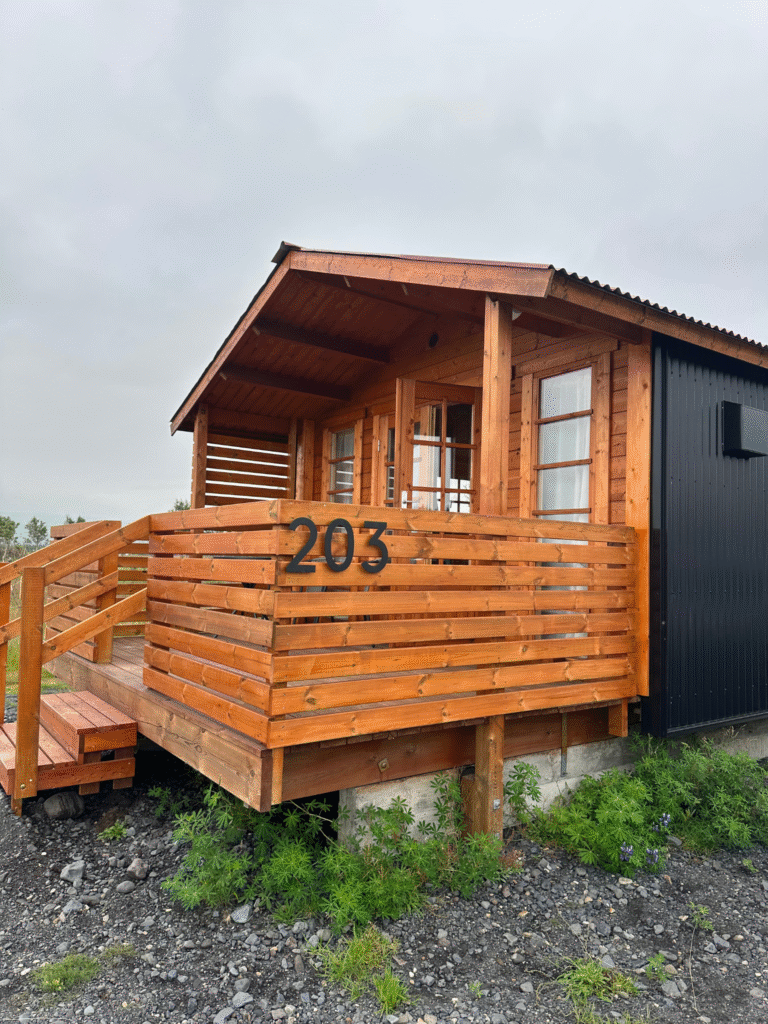
We stayed in a mix of hotels and Airbnbs across Iceland.
Cabin Hotel – Reykjavik (1 Night)
Our first night was at Cabin Hotel in Reykjavik. It was nothing fancy, and the outside was super run down. The building next to use actually had broken glass windows… There was a free breakfast. I wouldn’t choose to stay here a second time. Downtown was within walking distance from the hotel.
Airbnb – Þorlákshöfn (1 Night)
The next night, we stayed at an Airbnb in Þorlákshöfn. It was a super cute Airbnb that we only slept 4 hours in and left.
Airbnb – Hvolsvöllur (2 Nights)
For our South Coast adventures, we stayed in cozy cabin Airbnb in Hvolsvöllur. Our airbnb was 10-15 minutes form Seljalandsfoss. This gave us a nice central base to visit Skógafoss, Reynisfjara, and other nearby sights without changing accommodations daily. If you can’t find a place in Vik this could be a good options for you. Vik was sold out which is how we ended up in Hvolsvöllur.
Hotel Selfoss (1 Night)
We stayed Hotel Selfoss, which I would definitely recommend. It was clean, comfortable, and the breakfast was good.
Airbnb – Reykjavik (1 Night)
What we thought would be our final night was spent at another Airbnb in Reykjavik — a nice way to return to the city and relax before our flight.
Bonus Night: Hótel Borgarnes (1 Night)
Our flight was unexpectedly canceled, and we ended up spending an extra night at Hótel Borgarnes in Borganes. I really liked it! It was quiet, and comfortable. Borgarnes was a super quaint town. If you’re planning on exploring the Snæfellsnes peninsula this could be a good options for you to stay at.
Getting around Iceland? Do you need a 4×4 vehicle?Iceland Rental Car Options? Driving in Iceland

For booking your rental car for summer in Iceland considering booking 4-8 months in advance! We booked the rental car maybe 3-4 weeks out and there wasn’t a lot left to chose from especially if you’re going to need an AUTOMATIC and not a MANUAL. We ended up with a KIA sportage. I did think the KIA was a little too big for the road and would have preferred a smaller SUV but it was what was available.
Getting an AWD or 4WD SUV of some kind is worth it even for summer travel. I would try to get some kind of compact SUV since the roads are small and narrow and Parking can be a struggle especially in Reyjavik. Winter travel in Iceland would require a 4×4.
If you’re planning on going to the F roads in Iceland you legally need to have a 4×4 high clearance vehicle.
- F roads are consider unpaved gravel roads and they are not maintained and you could pass through rivers.
- If you’re planning on going on F roads please do the appropriate research and plan accordingly.
Camper vans are another popular options we saw a lot of in Iceland. Personally I wouldn’t enjoy this but it is an option.
The general speed limit in Iceland is:
| Road Type | Speed Limit |
|---|---|
| Urban/City Areas | 50 km/h (31 mph) |
| Rural Gravel Roads | 80 km/h (50 mph) |
| Paved Rural Roads (e.g., Route 1) | 90 km/h (56 mph) |

IMPORTANT:
- The roads in Iceland are narrower compared to what we drive in the United States. Certain areas feel super tight.
- Book your car rental early to ensure you can get an AUTOMATIC and not a MANUAL
- The weather conditions change fast! It could be sunny one hour and dense fog the next.
- Be mindful of the speed camera that Iceland has placed throughout the country. AKA just don’t speed
- One lane roads in Iceland: whoever is closed to the one lane road first has the right of way.
- HEADLIGHTS: must ALWAYS be ON. It’s the law in Iceland.
- Hold on to the car doors when windy!
- Lastly, drive safely and respect the local laws. Research common road signs in Iceland before visiting!!
What rental car company to use in Iceland?
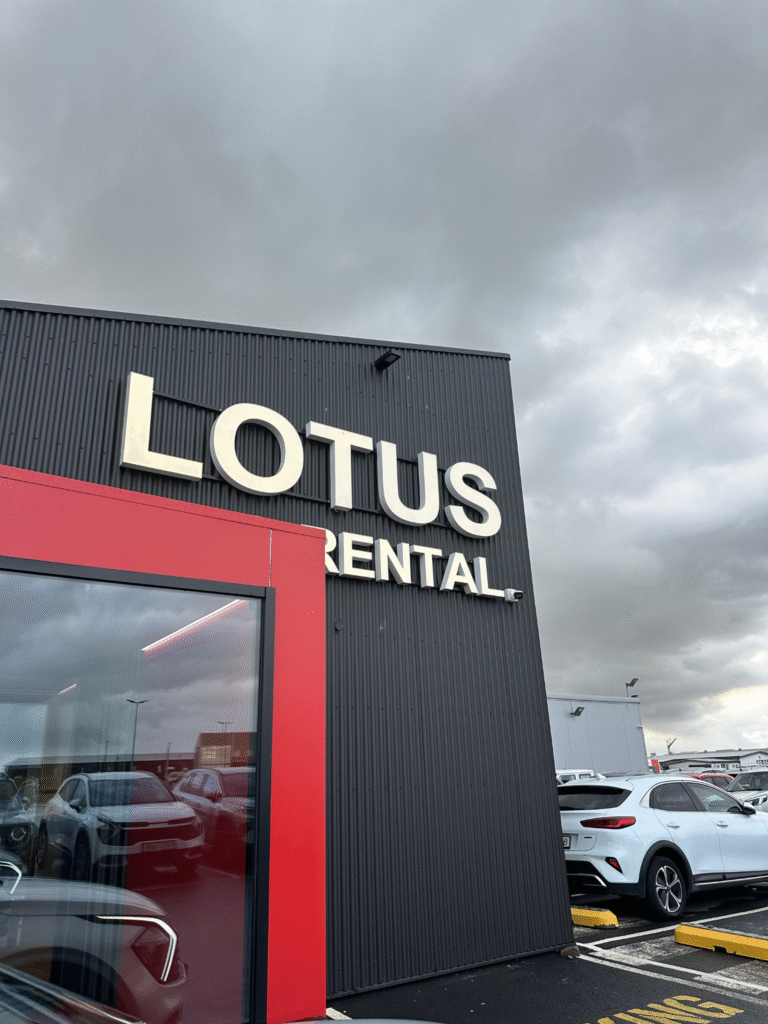
We rented a car through Lotus Car Rental. They have a shuttle pick up at the airport that takes you to and from the office about every 15 minutes.
Our experience with Lotus Car Rental was smooth. The Shuttle drives you to the rental car office and you get your rental very quickly. The go over all the importance information you should know: speed limits, how to call for help if you need it, and specific websites to check road and weather conditions.
They offer 24/7 emergency roadside assistance and have maintenance partners all around the country should something happen to the vehicle.
What car insurance to buy?
- We bought the platinum (highest level of insurance). There are so many ways to damage the car in Iceland that it wasn’t worth skimping on. Gravel, wind, and sand damage are very real. We ended up driving on a road after they laid fresh gravel and we some how got a dent and chipped of paint because of it.
- Also with the platinum insurance we receive free wifi hotspot for our trip.
- For a more comprehensive list comparing insurance please refer to Lotus website.
When we returned the car the asked us what insurance we had and since we had the platinum we were free to go.
Read the latest blog post!
- How to Spend Your First Time Visiting Yellowstone
- How to Spend 2 Days in Cannon Beach, Oregon First Time
- How to spend 7 days in Iceland? First Time
- Ultimate Iceland Puffin Guide: Everything You Need to Know to see the Puffins in Iceland
- Everything You Need to Know Before Visiting Iceland
Do you have to pay for parking at Scenic Spots in Iceland?

Short and obvious answer is YES. Lots of the tourist spots have cameras in the parking lot that are recording your license plate info. If you don’t pay and you’re using a rental vehicle the rental company will charge for all your UNPAID parking and you’ll have to pay a FINE on top of it. We missed a couple payments and you have to pay them with the rental car agency.
Download the Parka app ahead of time to save time!
If you’re going to Kirkjufell. The use EasyPark instead of the Parka app.
If you don’t want to download the apps you can just pay at the parking lots.
What is the summer weather like in Iceland?
The temperature in Iceland in the summer are mild. The average summer temperatures in Iceland range from 48F-57F(9-14C). July is the warmest month in Iceland. Iceland does see the occasional 70F temperature but it is rare. The wind is EXTREME and you need to be prepared for strong wind gusts that could knock you over or damage your car door.
If you’re heading to Iceland in the summer you’re going to have ample amount of sunlight to explore! YAY! Iceland doesn’t totally get dark in the summer months due to the it’s location near the Arctic Circle. In July Iceland gets about 4 hours of night when the sunset but it doesn’t get totally dark!
If you’re looking to experience the longest day of the year in Iceland. It’s June 21st.
| Month | Sunrise | Sunset | Daylight Hours |
|---|---|---|---|
| June | ~3:00 AM | ~12:00 AM | Up to 21+ hrs |
| July | ~3:30 AM | ~11:30 PM | ~20 hrs |
| August | ~5:00 AM | ~9:30 PM | ~16 hrs |
What to pack for Iceland Weather in the Summer? Waterproof pants necessary?
Whether or not you need waterproof pants will depend heavily on your itinerary. If you’re planning on getting soaked by waterfalls such as Seljalandsfoss, Gljúfrabúi, and Kvernufoss you should definitely have a rain jacket, waterproof pants, and waterproof boots.
If your just going to the waterfalls to look at them from the side I don’t think you need the waterproof pants.
Packing List:
- waterproof clothes
- Waterproof jacket (a must)
- I brought my old Columbia Jacket
- Waterproof pants if your itinerary calls for it
- I bought the Rainier Rain Pants from REI. I bought the size that could fit a pair of leggings on underneath so it would be easy to talk them off after the waterfall.
- Waterproof jacket (a must)
- Quick drying hiking pants
- Pack a couple pairs
- power bank and chargers for the the car
- just a good idea in general to these when traveling
- appropriate outlets
- you will need the European TYPE C adapter for travel in Iceland
- hiking boots – waterproof
- I do highly recommend hiking boots and make sure they’re waterproof. If you don’t own hiking boots see if you can buy some that were on sale! I got a great deal on my Oboz hiking boots.
- Thermal layers
- I brought 1 wool base layer and a couple moisture wicking shirts
- Vests and Down Jacket
- I brought one fleece vest for the trip.
- I skipped bringing a light weight down jacket but if you get cold easily I would consider bringing it.
- Swimsuit and flip flops if going planning on doing lagoons and spas
- Winter hat and lightweight gloves
- Nice to have for the glacier as well when it’s super windy by the coast!
- Sunglasses
- Everyday walking shoes for Reykjavik
- Towels: If staying in airbnbs make sure they have towels for you
- Sunscreen
- Home medications such as Tylenol and ibuprofen. Also check what is and is not allow when bring medications into another country
- Travel insurance
- Windproof jacket.
- If you have a waterproof jacket you have a windproof jacket!
- Icelands winds especially on the southern coastal regions can be super strong! At the rental car agency they tell you to park your car with the wind so your car doors won’t get damaged.
Having access to cellphone data in Iceland?
I used Airalo. You download their app and they will walk you through how to set up your esim. It’s super simple! I used Airalo for my Japan and UK trip. I am currently not a Tmobile or google fi user so those international plans are not an options for me.
I do also highly recommend getting a pocket wifi. We had one with our rental car and I thought it was super nice to have!
What power outlets does Iceland Use?
Iceland uses the standard European outlets. Type C power outlets.
Is tap water safe to drink in Iceland?
Yes, the Tap water is safe to drink! Iceland sources there water from natural springs within the country.
If you take hot showers you can smell sulfur which is coming the the natural geothermal filtration system of Iceland. You won’t smell the sulfur if you’re showering with cold water.
Getting food in Iceland?
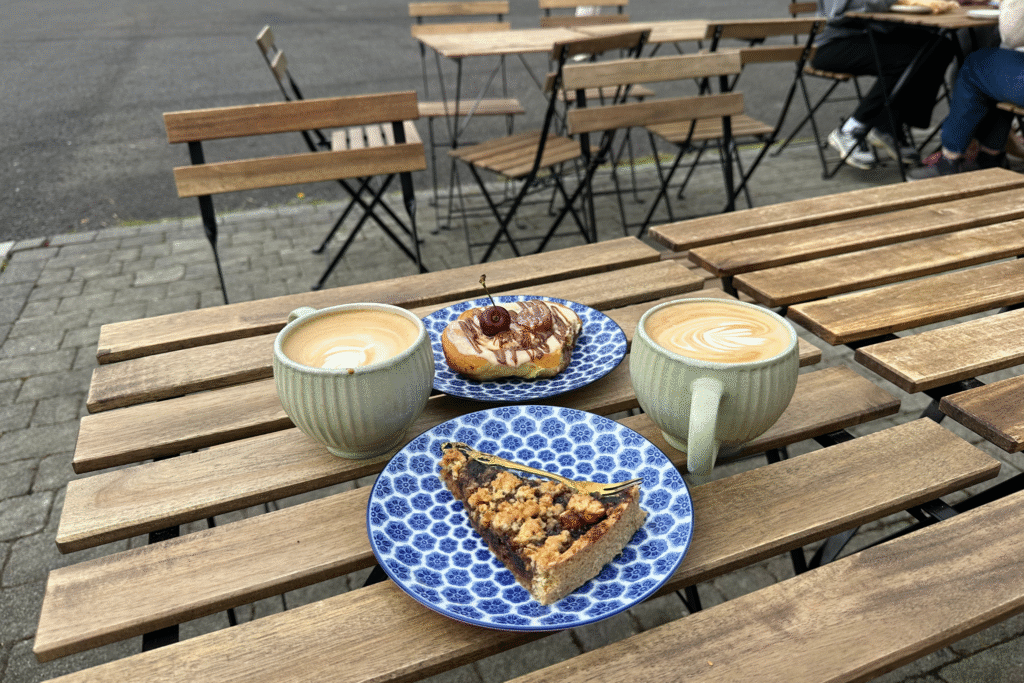
Lots of restaurants outside of Reykjavik close around 9-10pm! If you’re traveling in the summer please be mindful of restaurants closing. Some days you might want to pack your own dinner so you can be out exploring late into the midnight sun! There were a few bars open late but their kitchens close early so you’re not able to order food.
How to pay for things in Iceland?
We used tap to pay with apple pay throughout the whole trip. Only once or twice we had to pay directly with our credit cards.
It’s recommend to know your PIN for your credit card because you might have to use it in more rural areas.
Getting gas in Iceland?
The most common gas stations in Iceland are:
- Orkan – We used this one the most on our trip but it seemed to be slightly more expensive than some of the other gas stations
- N1
- Olís/OB
The rule of thumb in Iceland is if you’re traveling longer distance you need to fill up when you see a gas station. Especially if you’re heading to more rural locations such as the Westfjords, Eastjords, Highlands, etc. It’s much hard to find gas stations out here. They can be 150km + in between a single gas station.
Gas in Iceland is EXPENSIVE. We were paying $9-10 per gallon. We were always able to use apple pay or just our credit car to pay for gas. The internet says you need to have a PIN the fill gas. I never experience this but it’s still a good idea in general to know your PIN. It might be more prevalent in rural areas.
I saw prepaid gas cards were a popular options for tourist. If you’re renting a car I would talk to the rental agency and get more information.
Not all gas stations will have restrooms or food for sale.
IMPORTANT:
- REGULAR GAS (Bensin) is almost always a green fuel pump
- DESIEL (Disel) is almost always a black fuel pump.
Be very mindful to put the correct fuel in as putting the wrong fuel will probably ruin your trip.
Using the restrooms in Iceland?
Almost all major tourist spots such as the waterfalls will have restrooms and they’re quiet nice especially compared to the standard American restroom.
Last Bits
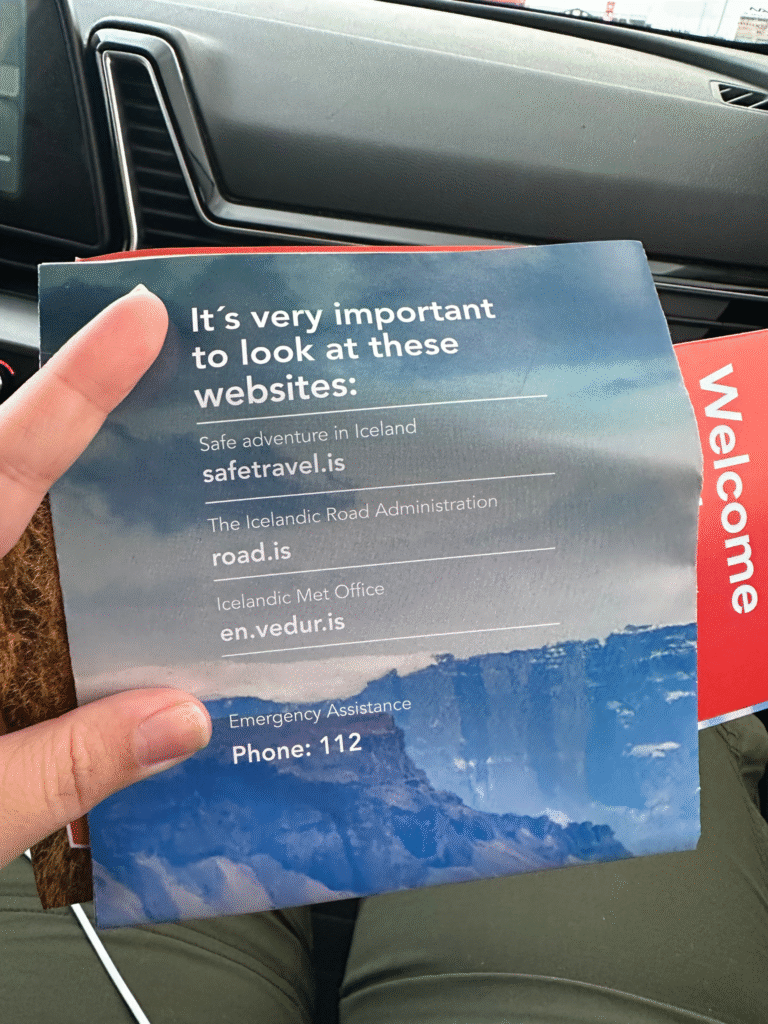
The number in Iceland to call for in case of an emergency is 112.
road.is – for road closure and other road information. This will have the most up to date info. Do not blindly follow google maps as there could be discrepancies
https://safetravel.is – for up to date safety information
Iceland Meteorological Weather Office – for up to date weather information
What is your must know Iceland travel tip?
Leave a Reply